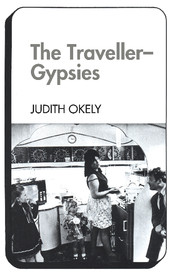Book contents
- Frontmatter
- Contents
- Dedication
- Preface
- 1 Historical categories and representations
- 2 Modern misrepresentations
- 3 Methods of approach
- 4 Economic niche
- 5 Self-ascription
- 6 Symbolic boundaries
- 7 Gorgio planning
- 8 Travelling
- 9 The trailer unit, spouses and children
- 10 Group relations and personal relatives
- 11 Gypsy women
- 12 Ghosts and Gorgios
- Concluding remarks
- Extract from The Scholar Gypsy
- Notes
- References
- Index
2 - Modern misrepresentations
Published online by Cambridge University Press: 04 December 2009
- Frontmatter
- Contents
- Dedication
- Preface
- 1 Historical categories and representations
- 2 Modern misrepresentations
- 3 Methods of approach
- 4 Economic niche
- 5 Self-ascription
- 6 Symbolic boundaries
- 7 Gorgio planning
- 8 Travelling
- 9 The trailer unit, spouses and children
- 10 Group relations and personal relatives
- 11 Gypsy women
- 12 Ghosts and Gorgios
- Concluding remarks
- Extract from The Scholar Gypsy
- Notes
- References
- Index
Summary
The Gypsies and Travellers decorate their homes with mirrors and dazzling chrome. Gypsies are reached by way of mirrors, through which they pass and where non-Gypsies see only reflections of themselves. Alternative glimpses are carefully deflected. In Gorgio print, distorted views repeat themselves. Contrary evidence must needs be overlooked. Plain facts are real illusions. On each side of these reflections there is vested interest in distortion.
Alleged isolation
Common misrepresentations of Gypsies have tended to include assumptions that the ‘real’ Gypsies were formerly or ideally in a state of isolation, with unique, self-contained ‘traditions’. The ‘true’ Gypsies are also depicted in only rural settings, despite the industrial revolution. Croft-Cooke presents the stereotyped view of English Gypsies as historical fact: ‘In Stuart times they split into smaller convoys but remained isolated from the housedwellers and spoke English imperfectly if at all … in the last century they were much as Borrow found them, a secret people, choosing lonely places, respecting their own laws and customs’ (1955:113). According to Croft-Cooke, in the nineteenth century the Gypsies became ‘far more dependent on trade’ with housedwellers ‘than they had been heretofore’ (1955:113).
Gypsies today are portrayed as victims of cultural disintegration and as helpless in the face of industrialisation, modern technology and urban advance. Trigg, for example, has written of English Gypsies: ‘such isolation caused partly by the need for protection and partly out of desire to preserve cultural integrity has kept the gypsy ignorant of the outside world’ (1967:43).
- Type
- Chapter
- Information
- The Traveller-Gypsies , pp. 28 - 37Publisher: Cambridge University PressPrint publication year: 1983



